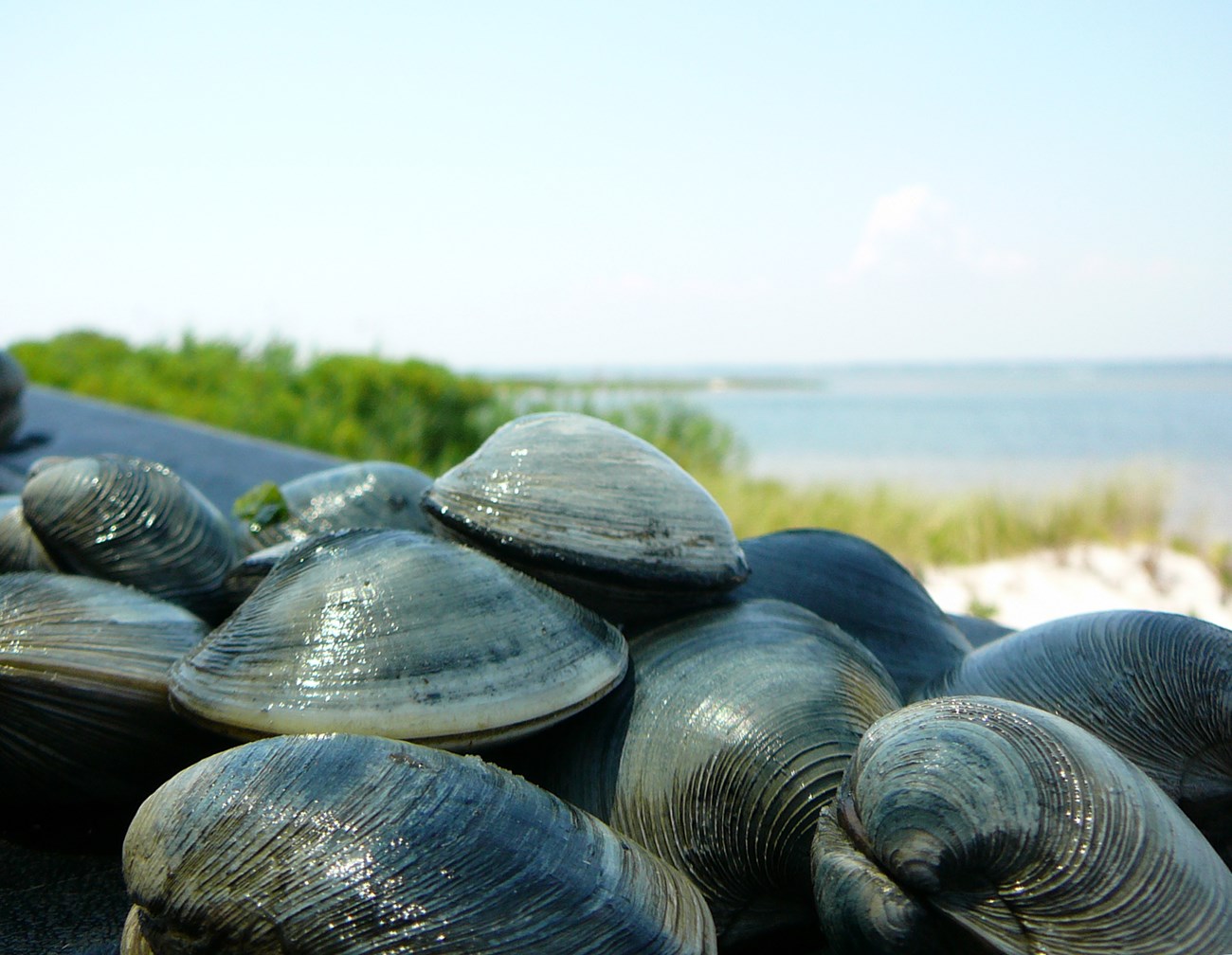
The ocean and bay shorelines of Fire Island are a place where land and sea meet and can provide clues about what's beyond the water's edge. Mollusks, or shellfish, like hard and surf clams, can be found on and off shore of Fire Island. Types of ClamsA variety of clam species can be found on or near Fire Island. The shells of hard shell clams (Mercenaria mercenaria), surf clams (Spisula solidissima), and soft shell clams (Mya arenaria) are commonly found along the shore.
The economically important surf clam lives on the ocean side of the island. It is harvested far off-shore, but its shells frequently wash onto the beach. You may even see a flock of gulls fighting over one of these live mollusks on the beach. Other ocean mollusks include the razor clam (Enis directus) and bean clam (Donax spp.). Clamming on Fire IslandEstuaries like the Great South Bay can be one of the most productive habitats on earth, with phytoplankton, eelgrass beds, and salt marshes providing a home for a variety of sea life. In the mid-nineteenth century, the Great South Bay was known for its Blue Point oysters. Later, from the 1960s to the 1980s, shellfishermen harvested an abundance of hard clams. Overfishing and changes in water quality led to the fall of the Great South Bay's oyster industry in the 1930s and then a steep decline in the hard clam population in the 1980s. Initiatives to improve water quality and restore shellfish populations continue today. |
Last updated: May 24, 2018
